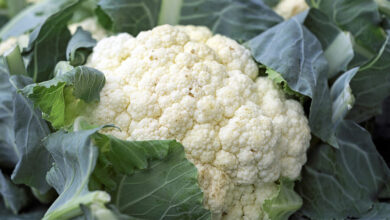Parsley: Health Benefits and Harms

Fragrant greens from the umbrella family pleases us not only in summer. Unpretentious parsley is easy to grow at home and in greenhouses, so it is sold in stores and markets all year round. The plant is used in fresh and dried form, cosmetics, medicines are made from it and used in canning. A real find for gourmets and people who care about their health!
The History of Parsley in Nutrition
Parsley first appeared in ancient Egypt. In ancient Greece, it was considered a symbol of death. When the Greeks said that “a person needs parsley”, this meant that he is on the verge of life and death, and, most likely, will die soon.
At the same time, parsley was an ancient symbol of life. A wreath of fragrant leaves was worn on the head to get rid of the danger of infection with various diseases.
The cultivation of parsley as a vegetable crop began in the 9th century. True, at first it was treated with some prejudice and was considered a herb that negatively affects the liver and causes increased urination. There is some truth in this – parsley really has a diuretic effect and is harmful to a diseased liver.
Composition and Calories
| Calories per 100 g | 49 kcal |
| Squirrels | 3.7 g |
| Fats | 0.4 g |
| Carbohydrates | 7.6 g |
Parsley contains beta-carotene, rich in vitamins B, A, PP and E. The leaves and roots contain a lot of iron, sodium, calcium, phosphorus, magnesium and zinc. These greens strengthen our body and help fight harmful bacteria.
Parsley contains organic acids, apiin, vegetable fibers, essential oils, folic acid and many other biologically active nutrients. There is more vitamin C in the leaves of a vegetable plant than in a lemon – 125-328 mg% . Essential oils, which are part of parsley, improve the taste and aroma of food.
The Benefits of Parsley

People have known about the benefits of a vegetable plant for a long time. Modern scientific research has revealed the antioxidant, antidiabetic, analgesic, antispasmodic, antithrombotic, laxative, estrogenic, diuretic, antibacterial and antifungal properties of parsley.
If you regularly eat parsley, you can satisfy the body’s need for vitamin C, the main defender against viral diseases. Magnesium and zinc, which are part of this plant, help to recover from physical and mental stress.
Parsley is a low-calorie product, it is useful to include it in the diet of losing weight people.
The Benefits Of Parsley For Women
With daily eating, you can get rid of problems with an unstable menstrual cycle and unpleasant symptoms during menstruation. B vitamins, which are abundant in parsley, reduce cramps in the lower abdomen and eliminate irritability.
Parsley is able to influence female beauty. Masks and creams with the addition of herbs effectively cleanse and whiten the face, help with acne and age spots. The use of decoctions allows you to quickly get rid of excess weight and swelling. Pregnant women should use parsley with caution. It can lead to uterine tone and provoke a miscarriage.
Parsley seeds are used to treat baldness. A mask of seeds, vegetable oil and water is rubbed into the damaged areas for 1-2 hours, and hair growth is gradually restored.
– Parsley juice helps with hangovers, reduces the effect of tobacco on the respiratory system and has an anti-inflammatory effect on the genitourinary system. The decoction helps to calm the gastrointestinal tract and improves digestion due to the large amount of dietary fiber.
The Benefits Of Parsley For Children
Parsley helps to cope with seasonal infections. The plant contains eugenol, a special essential oil with a pronounced anti-inflammatory effect, which strengthens the immune system and increases resistance to viral diseases. Parsley is a good prophylactic against a runny nose caused by allergies.
Parsley is introduced into the diet from 6-8 months, when children begin to be accustomed to cereals, meat and soups. The plant has a slightly bitter taste, so it is better to give it not in its pure form, but only as a seasoning.
The Harms of Parsley
For a healthy person, parsley is completely safe. The use of parsley is harmful to those who have problems with the kidneys and liver. Such people can eat spicy greens only in small quantities. From the use of parsley, it is better to completely refrain from pancreatitis and nephritis.
The Use of Parsley in Medicine

The medicinal properties of parsley have been known since antiquity. In medicine, this plant is used in the form of decoctions, infusions and tinctures. From the rhizomes, preparations are made that normalize the functioning of the liver and gallbladder, improve digestion, relieve discomfort from bloating and gastric disorders, have antimicrobial properties and increase the body’s resistance.
Parsley juice is used to strengthen blood vessels, normalize the functioning of the thyroid gland and the adrenal cortex. It helps to heal wounds, bruises and relieves skin itching from insect bites.
The use of parsley in cooking
Without the leaves and roots of parsley, it is impossible to imagine the preparation of soups, sauces and salads. This herb is popular in Russian, French and American cuisine and can enhance the taste of any dish. It is useful to eat parsley at any time of the year, but it is especially important to include it in the diet in late autumn, winter and early spring, when our body lacks vitamins.
Green Sauce
A simple, flavorful seasoning perfect for meat, fish and salad dressings.

| Bunch of fresh parsley | 50-60 g |
| Olive oil | 70-100 ml |
| Salt | taste |
| Lemon juice | taste |
Wash the parsley and finely chop the leaves without stems. Put in a deep bowl, pour in the oil and beat with a blender into a homogeneous mass. Add salt, lemon juice, transfer to a jar and put in the refrigerator. The sauce is ready to use.




